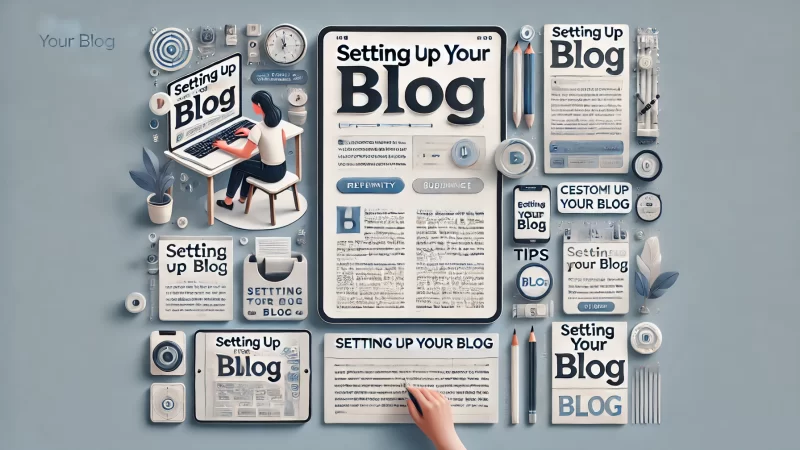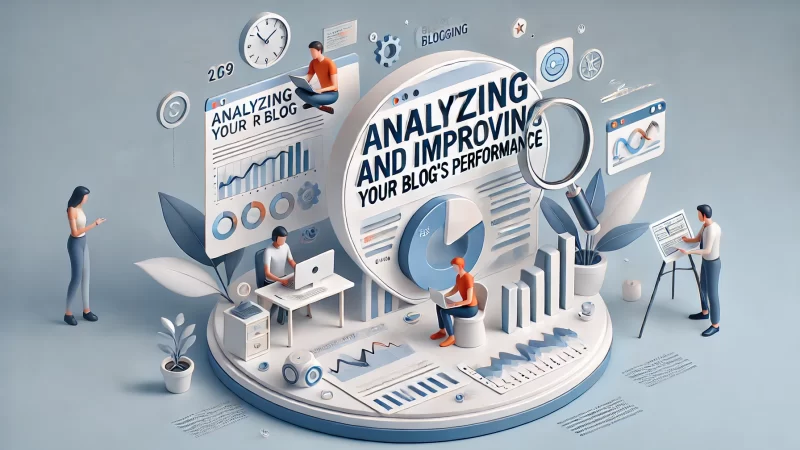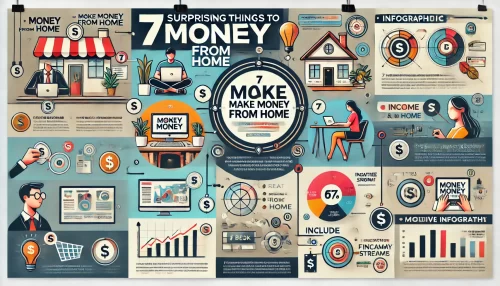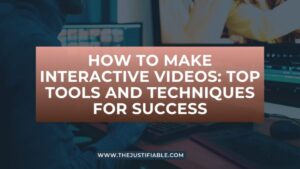Blogging for money can be a rewarding venture, but knowing where to start can be overwhelming. This beginner’s guide will walk you through the essential steps to set up, grow, and monetize your blog effectively.
1. Choosing a Profitable Blogging Niche

Selecting a profitable blogging niche is the first crucial step in blogging for money. Your niche determines your blog’s direction, target audience, and potential profitability. Choosing the right niche involves understanding market demand, competition, and aligning your passion with your expertise. This section will guide you through these vital considerations to set a solid foundation for your blogging journey.
A profitable niche must balance your interests with market demand. Researching trends and competition is essential to find a niche that is both popular and underserved. Consider tools like Google Trends, keyword research, and competitor analysis to gauge interest levels and identify gaps in the market. This approach ensures your blog has a strong potential for growth and monetization.
Understanding Market Demand and Competition
Understanding market demand is key to identifying a profitable niche. Start by researching what topics are trending and how they align with your interests. Use keyword research tools to discover what people are searching for and how often. High search volume indicates strong demand, which is a good sign for potential profitability.
Next, analyze your competition. Look at other blogs in your prospective niche to see how saturated the market is. Identify the strengths and weaknesses of your competitors. This insight helps you find unique angles or gaps in the content that you can exploit. By understanding both market demand and competition, you can position your blog to stand out and attract a loyal audience.
To effectively compete, you need to offer something unique. Whether it’s a fresh perspective, higher-quality content, or a specialized focus, differentiating your blog is crucial. This unique selling proposition (USP) will attract readers who are looking for something specific that only you can provide. Stay updated with industry trends to continually refine your content and maintain relevance.
Engage with your audience to understand their needs better. Use social media, surveys, and direct feedback to gather insights into what your readers want. This interaction not only helps you create relevant content but also builds a community around your blog. A loyal audience is more likely to convert into paying customers, making your blogging for money efforts more successful.
Identifying Your Passion and Expertise
Blogging about something you’re passionate about makes the process enjoyable and sustainable. Your enthusiasm will shine through your content, making it more engaging and authentic. Reflect on your interests, hobbies, and professional expertise. These areas are often the best starting points for choosing a niche.
Consider what topics you can write about extensively without losing interest. Your passion will drive you to research deeply and produce high-quality content. Additionally, your expertise in a subject can position you as an authority, building trust with your audience. This trust is crucial for monetization strategies like affiliate marketing and sponsored posts.
Identify your unique strengths and how they can benefit your audience. Perhaps you have insider knowledge, a unique skill set, or a distinctive voice that sets you apart. Leveraging these strengths will help you create valuable content that stands out in your niche. Remember, the more specific and focused your niche, the easier it will be to attract a dedicated audience.
Passion alone isn’t enough; it must align with market demand. Ensure there’s a significant audience interested in your topic. Use keyword research to validate your ideas and understand what potential readers are searching for. Combining your passion with thorough research ensures your blog will be both fulfilling and profitable.
Evaluating Niche Profitability
Evaluating the profitability of a niche involves assessing potential revenue streams and the buying behavior of your audience. Start by exploring how other bloggers in your niche are monetizing their content. Common methods include affiliate marketing, selling digital products, sponsored posts, and offering services.
Investigate affiliate programs related to your niche. Check if there are products or services you can promote that align with your blog’s content. High-commission products or recurring revenue models can significantly boost your earnings. Additionally, consider creating your own products, such as e-books, courses, or merchandise, to diversify your income sources.
Consider the long-term profitability of your niche. Some niches may be trending now but could lose popularity over time. Aim for evergreen content that remains relevant and valuable to readers regardless of trends. This strategy ensures sustained traffic and income potential.
Monitor industry trends and adapt your strategy accordingly. Stay informed about new products, services, or changes in audience preferences. Flexibility and willingness to pivot can help you maintain profitability in a dynamic market. By thoroughly evaluating niche profitability, you’ll be better equipped to make informed decisions and achieve long-term success in blogging for money.
2. Setting Up Your Blog: A Step-by-Step Guide

Setting up your blog is an exciting step in your journey to blogging for money. This process involves choosing the right platform, securing a domain name and hosting, and designing your blog to attract and retain visitors. By following these steps carefully, you’ll lay a strong foundation for your blogging success.
Choosing the right blogging platform is crucial. It determines how easily you can manage your content and customize your blog. Popular platforms like WordPress, Blogger, and Wix offer various features, making it essential to select one that suits your needs. Once your platform is chosen, the next step is registering a domain name and securing reliable hosting. These elements are fundamental to your blog’s online presence and performance.
Selecting the Right Blogging Platform
Selecting the right blogging platform sets the tone for your blogging experience. WordPress is the most popular choice due to its flexibility and extensive range of plugins. It powers over 40% of all websites, making it a reliable and robust option. Whether you’re a beginner or an experienced blogger, WordPress offers the tools you need to grow and monetize your blog.
Blogger is another platform that is user-friendly and straightforward. It integrates seamlessly with Google services, making it a convenient choice for those already using Google products. While it may not offer the same level of customization as WordPress, Blogger’s simplicity is appealing for beginners looking to start quickly.
Wix provides an intuitive drag-and-drop interface, allowing you to design your blog visually. It’s ideal for those who prefer a hands-on approach to creating their website without needing to code. Wix also offers various templates and design options, making it easier to create a unique and visually appealing blog.
Consider your long-term goals and technical comfort level when choosing a platform. Each platform has its strengths and limitations, so select one that aligns with your vision for blogging for money. As your blog grows, you may need more advanced features, so choosing a platform that can scale with you is essential.
Registering a Domain Name and Hosting
Registering a domain name is your first step toward establishing your blog’s online identity. Your domain name should be memorable, relevant to your niche, and easy to spell. Use domain registrars like GoDaddy, Namecheap, or Bluehost to search for and purchase your desired domain name. Investing in a good domain name is crucial for branding and SEO.
Hosting is the backbone of your blog. Reliable hosting ensures your blog loads quickly, remains secure, and handles traffic spikes efficiently. Popular hosting providers like Inmotion Hosting, Hostinger, and HostGator offer various plans tailored to different needs. Look for features like uptime guarantees, customer support, and scalability when selecting a host.
Shared hosting is a cost-effective option for beginners. It involves sharing server resources with other websites, which can be sufficient when starting. As your blog grows, you might need to upgrade to VPS (Virtual Private Server) or dedicated hosting for better performance and control. These options provide more resources and customization capabilities, essential for high-traffic blogs.
Security is a critical aspect of hosting. Ensure your hosting provider offers SSL certificates, daily backups, and robust security measures to protect your blog from cyber threats. A secure blog builds trust with your audience and helps maintain your reputation. Regularly update your hosting plan and security settings to keep your blog running smoothly.
Designing Your Blog for Success
Designing your blog plays a significant role in attracting and retaining visitors. A clean, visually appealing design enhances user experience and encourages readers to explore your content. Choose a theme or template that aligns with your niche and brand identity. WordPress, Wix, and other platforms offer numerous customizable themes to match your vision.
Navigation should be intuitive. Organize your content into clear categories and use menus to guide visitors to important sections of your blog. A well-structured site makes it easier for readers to find the information they need, reducing bounce rates and increasing engagement. Incorporate search functionality to help users locate specific posts quickly.
Visual elements like images, videos, and infographics can make your content more engaging. Use high-quality visuals to complement your text and break up long paragraphs. Tools like Canva can help you create stunning graphics without needing professional design skills. Visual content not only enhances readability but also improves SEO by encouraging longer visitor engagement.
Mobile responsiveness is crucial. Ensure your blog design adapts seamlessly to different screen sizes and devices. With a significant portion of web traffic coming from mobile users, a mobile-friendly design is essential for providing a positive user experience. Test your blog on various devices to ensure it looks and functions well everywhere.
3. Creating High-Quality, Engaging Content

Creating high-quality, engaging content is essential for blogging for money. The content you produce will be the primary driver of traffic to your blog and the foundation for your monetization strategies. By focusing on crafting compelling blog posts, utilizing SEO best practices, and incorporating visuals and multimedia, you can ensure your blog stands out and retains readers’ interest.
High-quality content is the cornerstone of successful blogging. It should be informative, valuable, and tailored to your audience’s needs. Engaging content keeps readers on your site longer, encourages social sharing, and improves your search engine rankings. To achieve this, you need to understand your audience, plan your content strategically, and consistently deliver value.
Crafting Compelling Blog Posts
Crafting compelling blog posts begins with understanding your audience. Know their interests, pain points, and the type of content they seek. This knowledge allows you to create posts that resonate with them and address their needs. Start with a captivating headline that grabs attention and sets the expectation for the content.
Structure your blog posts for readability. Use short paragraphs, bullet points, and subheadings to break up the text. This makes it easier for readers to scan and digest the information. An engaging introduction sets the tone and hooks the reader, while a strong conclusion summarizes the key points and provides a call to action.
Incorporate storytelling elements to make your content more relatable and memorable. Share personal experiences, anecdotes, and case studies to illustrate your points. This approach not only makes your posts more engaging but also builds a connection with your audience. Authenticity and transparency are powerful tools in creating trust and loyalty.
Use a conversational tone to make your writing more approachable. Address your readers directly, ask questions, and encourage interaction through comments and social media. This friendly style fosters a sense of community and makes your blog a go-to resource for your audience. Regularly update your content to keep it fresh and relevant.
Utilizing SEO Best Practices
Utilizing SEO best practices is vital for increasing your blog’s visibility and attracting organic traffic. Start by conducting thorough keyword research to identify terms your audience is searching for. Use these keywords naturally throughout your content, including in titles, headings, and meta descriptions, without keyword stuffing.
On-page SEO involves optimizing individual blog posts to rank higher in search engines. Use descriptive, keyword-rich titles and headers to improve relevance. Ensure your content is well-organized, with clear headings and subheadings that help search engines understand the structure. Include internal and external links to provide additional value and context.
Optimize your images by using descriptive file names and alt text. This helps search engines understand the content of your images and can improve your visibility in image searches. Additionally, fast-loading pages are crucial for SEO. Compress images and use a reliable hosting service to ensure your blog loads quickly.
Focus on creating long-form content that provides comprehensive coverage of topics. Longer posts tend to rank higher in search results and attract more backlinks. Aim for a mix of evergreen content, which remains relevant over time, and timely posts that address current trends and issues. This strategy ensures a steady flow of traffic to your blog.
Incorporating Visuals and Multimedia
Incorporating visuals and multimedia enhances the user experience and makes your content more engaging. High-quality images, infographics, and videos can break up text and provide additional value to your readers. Visual content is more likely to be shared on social media, increasing your reach and visibility.
Use relevant images to illustrate your points and make your content more visually appealing. Stock photos, custom graphics, and screenshots can all be effective. Ensure your images are high resolution and optimized for web use. Tools like Canva can help you create custom visuals that align with your brand.
Videos are a powerful way to engage your audience. They can explain complex concepts, showcase products, or provide tutorials. Embedding videos from platforms like YouTube or Vimeo can increase the time visitors spend on your site. Consider creating your own video content to add a personal touch and further connect with your audience.
Infographics are another effective visual tool. They condense information into an easily digestible format and can be particularly useful for sharing data and statistics. Infographics are highly shareable and can drive traffic back to your blog. Use tools like Piktochart or Infogram to create professional-looking infographics that enhance your content.
4. Building and Growing Your Audience

Building and growing your audience is crucial for successful blogging for money. An engaged and loyal readership not only increases your traffic but also enhances your monetization opportunities. By effectively promoting your blog on social media, engaging with your readers, and networking with other bloggers, you can cultivate a thriving community around your blog.
Growing your audience requires consistent effort and strategic planning. Social media platforms offer a powerful way to reach potential readers and drive traffic to your blog. Additionally, fostering direct engagement with your audience builds trust and loyalty, while networking with other bloggers can open up new opportunities for collaboration and growth.
Promoting Your Blog on Social Media
Promoting your blog on social media is essential for reaching a broader audience and driving traffic. Each platform has its unique strengths, so tailor your strategy accordingly. Facebook, Twitter, Instagram, Pinterest, and LinkedIn each offer different ways to engage with users and share your content.
Start by creating profiles on the major social media platforms that align with your blog’s niche. Share your blog posts regularly, using attention-grabbing headlines and compelling visuals. Consistent posting helps keep your audience engaged and increases your content’s visibility. Use hashtags strategically to reach a broader audience interested in your niche.
Engage with your followers by responding to comments and messages promptly. Building a community on social media requires two-way interaction. Encourage discussions, ask questions, and share behind-the-scenes content to humanize your brand. This approach fosters a deeper connection with your audience, making them more likely to visit and share your blog.
Leverage social media advertising to boost your reach. Platforms like Facebook and Instagram offer targeted advertising options that allow you to reach specific demographics. Invest in ads to promote your best content, drive traffic to your blog, and attract new followers. Track the performance of your ads to optimize your strategy and maximize your return on investment.
Engaging with Your Readers
Engaging with your readers is vital for building a loyal audience. Encourage comments on your blog posts and respond to them promptly. This interaction shows your readers that you value their input and fosters a sense of community. Address their questions, acknowledge their feedback, and thank them for their support.
Create opportunities for readers to interact with you outside of the comment section. Consider hosting live Q&A sessions, webinars, or social media live streams. These events allow you to engage with your audience in real-time, answer their questions, and provide additional value. Promoting these events on your blog and social media can increase participation and engagement.
Personalize your communication by using email marketing. Send regular newsletters with exclusive content, updates, and promotions to your subscribers. Segment your email list based on readers’ interests and behaviors to deliver more relevant content. Personalized emails have higher open rates and engagement, helping you build a stronger connection with your audience.
Incorporate reader-generated content into your blog. Feature guest posts, interviews, or user testimonials to showcase your readers’ contributions. This not only provides fresh content but also makes your readers feel valued and appreciated. User-generated content can also attract new visitors who relate to the contributors’ perspectives and experiences.
Networking with Other Bloggers
Networking with other bloggers can significantly boost your blog’s growth. Building relationships with bloggers in your niche opens up opportunities for collaboration, guest posting, and cross-promotion. These activities can expand your reach, introduce you to new audiences, and enhance your blog’s credibility.
Start by identifying bloggers who share a similar audience or have complementary content. Reach out to them through social media, email, or networking events. Be genuine and offer value in your interactions. Propose mutually beneficial collaborations, such as guest posts, joint webinars, or social media takeovers.
Participate in blogging communities and forums to connect with other bloggers. Platforms like Reddit, Quora, and niche-specific forums offer spaces to share your expertise, ask questions, and build relationships. Active participation in these communities can drive traffic to your blog and establish you as a knowledgeable and engaged member of your niche.
Attend blogging conferences and events, both virtual and in-person. These gatherings provide opportunities to meet bloggers, industry experts, and potential collaborators face-to-face. Networking at these events can lead to valuable partnerships, knowledge exchange, and inspiration for your blogging journey. Stay connected with the contacts you make and nurture these relationships over time.
5. Monetizing Your Blog: Proven Strategies

Monetizing your blog effectively is the key to turning your passion for blogging into a sustainable income stream. Blogging for money involves various strategies that can generate revenue, each with its unique advantages. In this section, we’ll explore proven methods, including affiliate marketing, sponsored posts, and offering your own products or services.
To succeed in monetizing your blog, it’s essential to diversify your income sources. Relying on just one method can be risky, especially if market conditions change. By implementing multiple monetization strategies, you can ensure a steady income and maximize your blog’s earning potential. Let’s delve into these proven strategies in detail.
Affiliate Marketing for Bloggers
Affiliate marketing is a popular and effective way to monetize your blog. It involves promoting products or services from other companies and earning a commission for each sale made through your referral links. To succeed in affiliate marketing, choose products that align with your blog’s niche and resonate with your audience.
Start by joining reputable affiliate programs such as Awin, ShareASale, or Commission Junction. These platforms offer a wide range of products and services to promote. Create high-quality content that naturally incorporates your affiliate links, such as product reviews, tutorials, or listicles. Ensure your content provides genuine value and is not overly promotional.
Transparency is crucial in affiliate marketing. Disclose your affiliate relationships to your readers to maintain trust and credibility. Use clear and honest language to explain that you may earn a commission at no extra cost to them. This transparency builds trust and encourages your audience to support you by using your affiliate links.
Track the performance of your affiliate links using tools like ClickMagic or affiliate dashboards provided by the programs. Analyze which products and posts generate the most clicks and conversions. Use this data to optimize your strategy, focusing on the most profitable products and content types. Regularly update your links and content to reflect any changes in the affiliate programs.
Sponsored Posts and Partnerships
Sponsored posts and partnerships offer another lucrative way to monetize your blog. Companies may pay you to create content that promotes their products or services. These collaborations can take various forms, including sponsored blog posts, social media mentions, or brand ambassadorships.
To attract sponsorship opportunities, build a strong online presence and showcase your influence. Highlight your blog’s traffic, engagement metrics, and audience demographics in a media kit. Reach out to brands that align with your niche and propose mutually beneficial partnerships. Clearly outline the value you can offer, such as increased exposure and authentic content.
When creating sponsored content, maintain your voice and authenticity. Readers can quickly detect inauthentic promotions, which can harm your credibility. Integrate the sponsored product or service naturally into your content, providing honest reviews or experiences. Ensure the content is valuable and relevant to your audience, even if it’s sponsored.
Negotiate fair compensation for your sponsored posts based on your blog’s reach and influence. Understand the scope of work, deliverables, and deadlines before agreeing to a partnership. Use contracts to formalize agreements and protect your interests. Long-term partnerships with brands can provide a stable income stream and strengthen your blog’s reputation.
Offering Products and Services
Offering your own products and services can be a highly profitable way to monetize your blog. Digital products like e-books, online courses, and printables are popular options that leverage your expertise. Physical products, such as merchandise, can also be effective if they resonate with your audience.
Identify the needs and pain points of your readers to create products that provide solutions. Use surveys, polls, and feedback to gather insights into what your audience is willing to pay for. Develop high-quality products that offer real value, and price them competitively. Promote your products through your blog, social media, and email marketing campaigns.
Services such as consulting, coaching, or freelance work can also generate income. Position yourself as an expert in your niche and offer services that utilize your skills and knowledge. Create a dedicated page on your blog outlining your services, testimonials, and contact information. Network with potential clients through online communities, social media, and industry events.
Deliver exceptional value in every product or service you offer. Provide excellent customer support, gather feedback, and continuously improve your offerings. Satisfied customers are more likely to recommend your products and services, leading to increased sales and a stronger reputation.
6. Analyzing and Improving Your Blog’s Performance

Analyzing and improving your blog’s performance is essential for sustained growth and monetization. Regularly evaluating your blog’s metrics helps you understand what works, identify areas for improvement, and adapt to changing trends. By tracking key metrics, implementing A/B testing, and staying updated with industry changes, you can optimize your blog for success.
Effective performance analysis involves using tools and strategies to gather data on your blog’s traffic, engagement, and conversions. This data-driven approach enables you to make informed decisions and continuously enhance your content and monetization strategies. Let’s explore these techniques in more detail.
Tracking Key Metrics and Analytics
Tracking key metrics and analytics is fundamental to understanding your blog’s performance. Tools like Kissmetrics provide detailed insights into your blog’s traffic, user behavior, and conversion rates. Monitor metrics such as page views, bounce rate, average session duration, and user demographics to gauge your blog’s effectiveness.
Set up goals in Kissmetrics to track specific actions, such as newsletter sign-ups, purchases, or clicks on affiliate links. These goals help you measure your blog’s success in achieving your monetization objectives. Use the data to identify high-performing content and replicate its success in future posts.
Regularly review your analytics reports to spot trends and patterns. Identify which traffic sources drive the most visitors to your blog, whether it’s organic search, social media, or referrals. Analyze the performance of individual posts to understand what resonates with your audience. Use this information to refine your content strategy and focus on topics that generate the most engagement and revenue.
Create custom dashboards and reports to visualize your data more effectively. These tools allow you to track your key metrics at a glance and share insights with stakeholders or team members. By keeping a close eye on your analytics, you can make data-driven decisions that enhance your blog’s performance and profitability.
Implementing A/B Testing for Optimization
Implementing A/B testing is a powerful method for optimizing your blog’s performance. A/B testing involves comparing two versions of a webpage or element to determine which performs better. This technique helps you make informed decisions about changes to your blog’s design, content, or calls to action.
Start by identifying areas of your blog that could benefit from A/B testing, such as headlines, images, or button colors. Create two versions of the element you want to test and randomly show them to different segments of your audience. Measure the performance of each version using metrics like click-through rates, conversion rates, or time on page.
Analyze the results of your A/B tests to determine which version performs better. Use the winning version as the new standard and continue testing other elements to further optimize your blog. A/B testing allows you to make incremental improvements based on actual user behavior, leading to a more effective and user-friendly blog.
Document your A/B testing process and results to track your progress and learn from each experiment. Share your findings with your team or use them to inform your future strategies. Regularly conducting A/B tests ensures your blog remains optimized for both user experience and monetization.
Adapting to Industry Trends and Changes
Adapting to industry trends and changes is crucial for maintaining your blog’s relevance and competitiveness. The blogging landscape is constantly evolving, with new technologies, platforms, and audience preferences emerging regularly. Staying informed about these changes allows you to adjust your strategies and stay ahead of the curve.
Follow industry blogs, attend webinars, and participate in online communities to stay updated with the latest trends. Subscribe to newsletters from thought leaders and industry experts to receive timely insights and analysis. Engage with your peers to exchange ideas and learn from their experiences.
Incorporate new tools and technologies into your blog to enhance user experience and functionality. For example, consider using chatbots for customer support, interactive content to engage readers, or advanced SEO tools to improve your search rankings. Experiment with different formats, such as podcasts or live videos, to reach new audiences and diversify your content.
Be flexible and willing to pivot your strategies as needed. If a particular approach or platform is no longer effective, don’t hesitate to try something new. Continuously monitor your blog’s performance and be proactive in making adjustments. By staying adaptable and responsive to industry changes, you can ensure your blog’s long-term success and profitability.
Frequently Asked Questions (FAQ)
How can I start a blog to make money?
To start a blog for making money, you need to choose a profitable niche, select a blogging platform (like WordPress), and register a domain name. Set up your blog with a reliable hosting provider, design your site to be user-friendly, and start creating valuable content.
What are the best ways to monetize a blog?
There are several effective ways to monetize a blog:
Affiliate Marketing: Promote products and earn a commission for each sale through your unique link.
Sponsored Posts: Write posts for companies and get paid for promoting their products or services.
Ad Networks: Use platforms like Adsterra to display ads on your blog and earn money based on clicks or impressions.
Selling Digital Products: Create and sell eBooks, online courses, or other digital goods.
Memberships: Offer premium content to subscribers for a monthly fee.How much can you make from blogging?
Earnings from blogging vary widely. Some bloggers make a few hundred dollars a month, while others earn thousands. The amount depends on factors like niche, traffic, and monetization strategies. Consistent effort and effective SEO can significantly boost your income over time.
How long does it take to make money from a blog?
It usually takes several months to start making money from a blog. Building traffic and establishing authority in your niche requires consistent content creation and SEO efforts. Most bloggers see substantial income after 6 months to a year, but it can take longer depending on the niche and competition.
What is the best blogging platform to use for making money?
WordPress.org is widely considered the best platform for making money with a blog due to its flexibility and extensive plugin ecosystem. It allows for better control over SEO, customization, and monetization options compared to other platforms like Blogger or Wix.
What types of blogs make the most money?
Blogs in profitable niches like personal finance, health and wellness, lifestyle, travel, food, and technology tend to make the most money. These niches have high audience demand and various monetization opportunities through affiliate marketing, ads, and sponsored content.
Do you need a large audience to make money blogging?
While having a large audience helps, it’s not always necessary. Niche blogs with a smaller but highly engaged audience can be very profitable, especially through targeted affiliate marketing and premium content. The key is to provide value and build trust with your readers.
How do I drive traffic to my blog?
Driving traffic to your blog involves several strategies:
SEO: Optimize your content for search engines to improve organic traffic.
Social Media Marketing: Promote your blog posts on platforms like Facebook, Twitter, and Instagram.
Email Marketing: Build an email list and send regular newsletters to drive repeat traffic.
Guest Posting: Write for other blogs in your niche to attract new readers.
Content Marketing: Create valuable, shareable content that naturally attracts visitors.Can you make money blogging about any topic?
While you can make money blogging about many topics, some niches are more profitable than others. Choosing a niche with high demand and monetization opportunities is crucial. Topics like finance, health, and technology often have better earning potential compared to less popular subjects.
What are the common mistakes to avoid when blogging for money?
Common mistakes include:
Ignoring SEO: Not optimizing your blog for search engines can limit your traffic and income.
Inconsistent Posting: Irregular updates can disengage your audience.
Choosing the Wrong Niche: A niche without demand can hinder your monetization efforts.
Overloading with Ads: Too many ads can frustrate readers and reduce their trust.
Lack of Promotion: Not promoting your content effectively can limit your reach and earnings.






